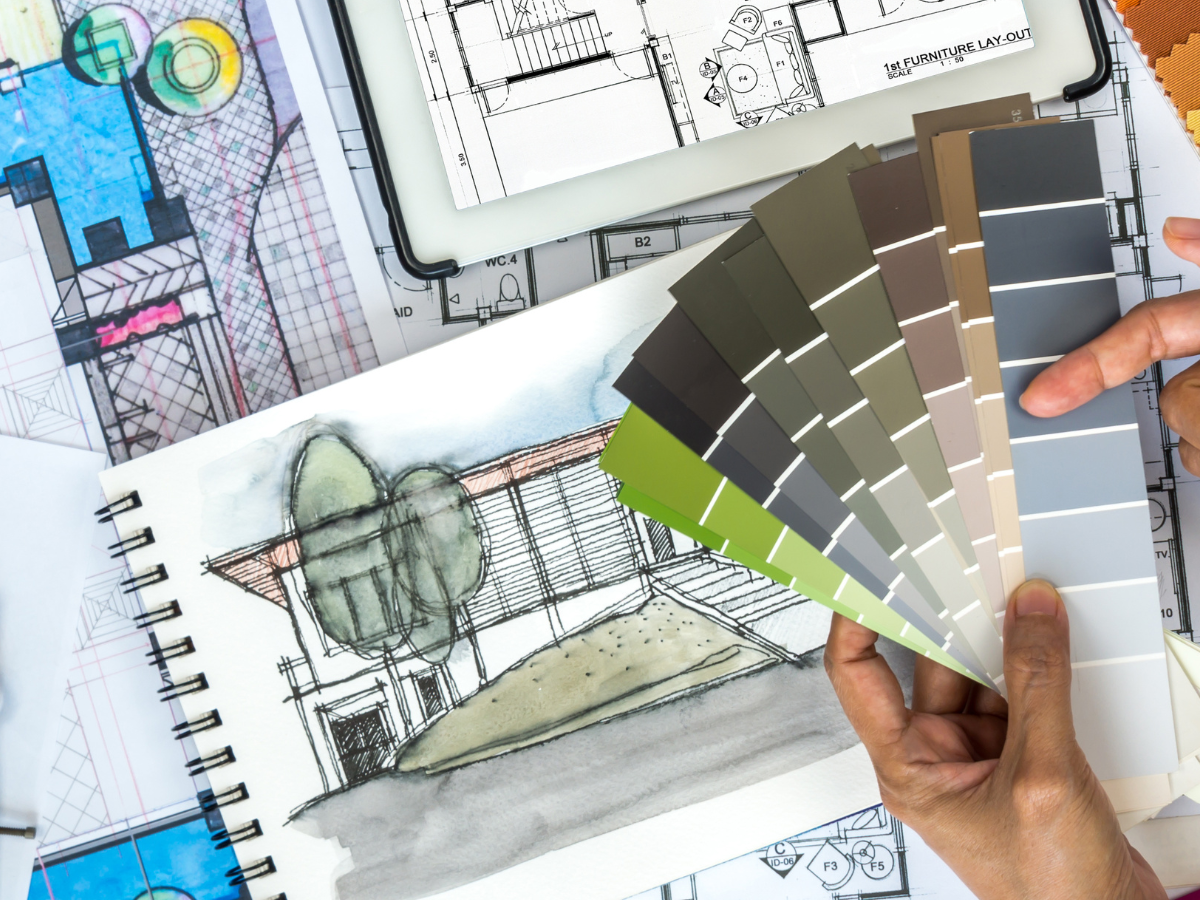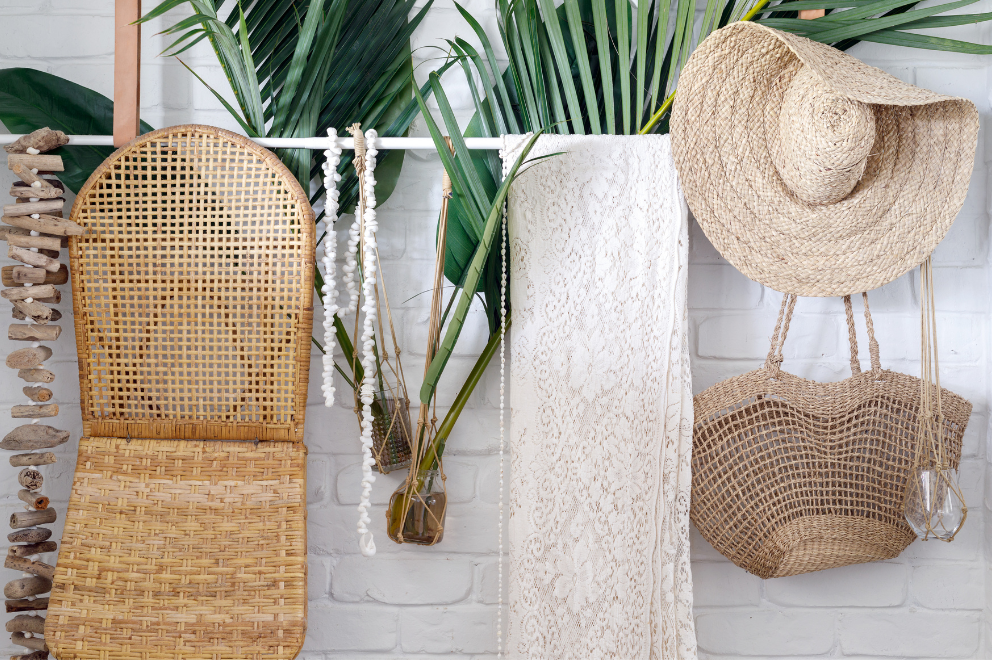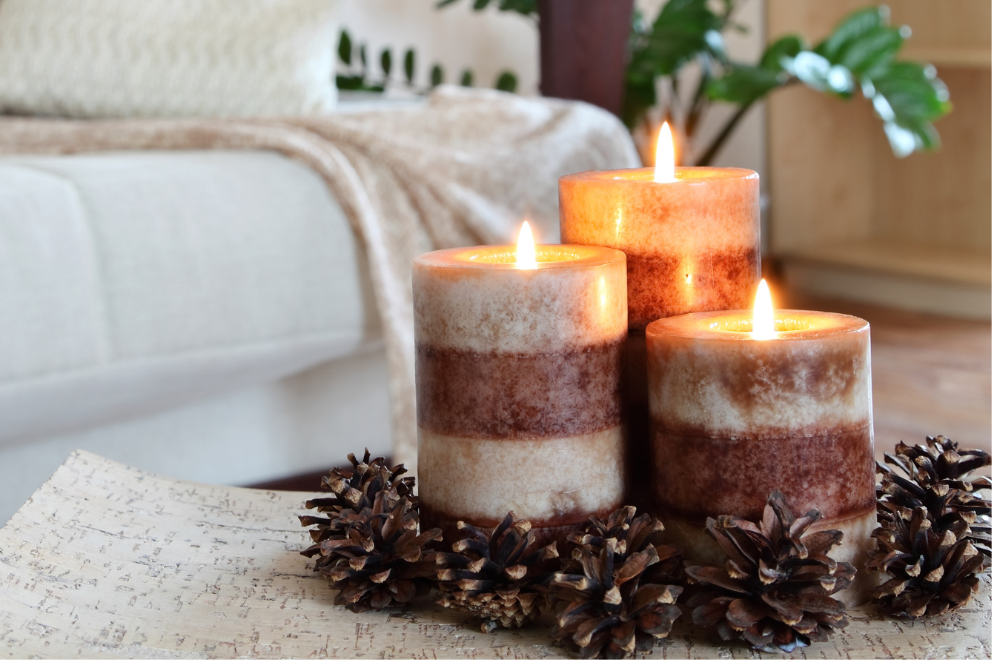
From bold patterns to subtle textures, your backsplash can transform the heart of your home into a space that reflects your personality and style.
In this blog, we’ll explore unique and trendy backsplash ideas that cater to every taste—whether you love a modern, rustic, or minimalist vibe.
Home decor is an essential aspect of creating a warm, inviting, and functional living space. It encompasses a wide range of elements that come together to reflect your personal style and enhance the aesthetic appeal of your home. In this article, we will delve into the various components that fall under the umbrella of home decor, providing you with a comprehensive guide to transform your space into a beautiful and comfortable haven.

Home decor is all about arranging furniture, accessories, and design elements to make a space both beautiful and practical. It’s the way you bring together colors, lighting, furniture, and decorations to create a place that feels like home.
But it’s not just about the stuff you put in a room—it’s about creating a vibe that reflects who you are. A well-decorated home should feel welcoming, show off your personal style, and meet your everyday needs. Whether you’re into sleek, modern designs or love the charm of vintage pieces, home decor is what makes your space uniquely yours.
At its core, home decor is about finding that perfect balance between comfort and style, making sure your space not only looks good but also feels right for how you live.
Effective home decor not only enhances the visual appeal of your home but also impacts the ambiance and functionality of each room. A well-designed space can boost your mood, increase productivity, and create a sense of relaxation.

When decorating your home, there are some key elements that form the heart of any space. These essentials not only fill a room but also shape how it feels and functions.
Furniture is the backbone of home decor. It includes your bigger pieces like sofas, beds, dining tables, chairs, and storage. These items dictate how you use a room. While it’s easy to get caught up in how a piece looks, comfort and practicality are just as important. You’ll be sitting, sleeping, and spending time around these pieces, so they need to feel good and last long.
Lighting is often overlooked, but it can completely change the feel of a room. It sets the mood, whether you need bright lights for work or soft, warm lighting for a cozy evening. There are three main types of lighting to consider:
Textiles like rugs, curtains, throw pillows, and blankets are what make a room feel cozy. They bring in softness, color, and texture. Rugs can help divide a space, curtains add a touch of elegance, and throw pillows are a fun way to change up your look without much effort. These details turn a house into a home, adding comfort and warmth.

Colors set the mood for a room. Soft, neutral shades create a peaceful, cozy atmosphere, while bold colors bring energy and excitement. By sticking to a few base colors and adding pops of accents, you can keep the space balanced and visually appealing. Whether you like calm tones or something more lively, the right color palette ties everything together.
Mixing textures and patterns brings depth and character to a room. Think about pairing different materials—like wood, metal, and fabric—to create a variety of sensations. A smooth leather chair next to a soft wool rug, or a sleek metal table paired with a rustic wood floor, can make a room feel more dynamic. Patterns, whether bold or subtle, add an extra layer of visual interest to the space.
Wall art and decor are the finishing touches that give a room personality. Whether it’s a framed painting, family photos, or a mirror that brightens up the space, wall decor helps make a room feel complete. Just be mindful of where and how you hang things—art should complement the room without overwhelming it.
Plants are a simple way to bring life and color into your home. From small succulents to tall indoor trees, greenery softens a space and connects it with nature. Plus, plants purify the air, making your home feel fresher and more vibrant. They’re a great, low-maintenance way to enhance any room.
Personal touches are what turn a house into a home. Whether it’s a collection of travel souvenirs, cherished family heirlooms, or your favorite books, these little details add warmth and tell your story. Personal accents make a room feel uniquely yours and create a comfortable, lived-in atmosphere.
Good storage doesn’t just keep things tidy—it can be stylish too. Shelves, baskets, and cabinets help organize your space while blending in with the overall design. When your space is clutter-free, it feels more open, relaxing, and functional. Plus, storage can be a great way to show off your favorite things while keeping everyday items within reach.
The type of flooring you choose plays a big role in the feel of a room. Whether it’s warm hardwood, sleek tile, or soft carpeting, the flooring sets the foundation. Area rugs can also add warmth, define spaces, or introduce texture and color to the room. Your flooring choices should reflect both style and comfort.
Each of these elements—color, texture, art, plants, personal accents, storage, and flooring—work together to create a space that’s both functional and full of personality. When everything clicks, your home becomes a place that’s not only beautiful but truly you.

Home decor offers endless possibilities for creativity, with various styles catering to different tastes and lifestyles. Here are some popular types of home decor to explore:
 Canva[/caption]
Canva[/caption]
Start by choosing a color palette that speaks to you. A neutral base can be your anchor, and from there, add a couple of accent colors to create a sense of harmony. Think of it like getting dressed – your base outfit (the neutrals) sets the stage, while accessories (your accent colors) make everything pop!
Tip: Add those pops of color with items like pillows, rugs, or artwork that can easily be swapped out for a refresh.
Whether you’re drawn to modern minimalism, rustic charm, or a more eclectic vibe, sticking to one dominant decor theme helps your home feel intentional. It’s like creating a playlist – too many different styles can feel jarring, but when you have a unifying sound (or look), it all comes together beautifully.
Tip: Feel free to blend styles, but let one theme take the spotlight to avoid a cluttered or chaotic look.
Just like in fashion, proportions matter. Oversized furniture in a small space can feel overwhelming, while tiny pieces in a large room can get lost. Choose furniture that complements the size of the room and leaves enough space to move around comfortably.
Tip: Opt for sleeker, more compact furniture in smaller rooms, and go for larger, statement pieces in more spacious areas.
While colors provide harmony, textures bring life to a room. Mixing materials like wood, metal, and soft fabrics adds depth and keeps the space from feeling one-note. It’s the difference between a plain dish and one with a perfect blend of flavors.
Tip: Try pairing soft textures like velvet or silk with rougher ones like wool or wicker to create balance and interest.
Repetition is key when it comes to design. By echoing patterns or shapes throughout your space, you create a natural flow. Think about a geometric rug that reflects the shapes in your wall art or furniture – it’s like finding a rhythm in music that carries you through.
Tip: Try repeating a pattern or shape at least three times to create a balanced, cohesive look.
Bold decor can make a statement, but too much of it can overwhelm. To keep things harmonious, balance those attention-grabbing pieces with neutral items. It’s like pairing a statement necklace with a simple outfit – let the bold shine without competition.
Tip: For every bold piece, like a vibrant painting, add a neutral counterpart, like a sleek sofa or simple throw.
Lighting can transform a room, both in function and style. Layering general, task, and decorative lighting gives you flexibility and keeps your space looking polished. Matching styles across fixtures helps create a unified look.
Tip: Use a mix of lighting types, like pendant lights, table lamps, and floor lights, to create depth and warmth in the space.
If your home has multiple rooms, try to create a sense of connection between them. Whether it’s through color, texture, or materials, repeating elements from room to room makes your home feel more cohesive, like different chapters in the same story.
Tip: Choose an accent color or a material that appears in each room to subtly tie everything together.
What really makes your house a home are the personal touches. Family photos, travel keepsakes, and heirloom pieces add warmth and tell your story. It’s like hanging out with friends – the more personal, the more comfortable and inviting it feels.
Tip: Create a gallery wall or curated display to showcase your personal items in a stylish, organized way.
A tidy, clutter-free space always feels more cohesive and relaxing. Make organization a priority by using stylish storage solutions that blend seamlessly with your decor, like woven baskets or sleek shelving. It’s like giving your room room to breathe.
Home decor includes all the things that make a space feel like home. This can be furniture, lighting, rugs, curtains, or smaller details like wall art, pillows, plants, and even little decorative items. It’s all about adding your personal touch and making your living space feel cozy and inviting.
Home decor is about choosing and arranging furniture and accessories to make a space look nice and reflect your style. Interior design goes deeper—it’s about planning the overall layout, thinking about lighting, electrical work, and how a room functions. Interior design focuses on both how things look and how they work, while home decor is more about the fun part—styling!
To pick a home decor style, start with what makes you happy. Do you like clean, modern lines? Or are you more into a cozy, rustic feel? Browse through different styles (like modern, traditional, or boho) and think about the vibe you want in your home. Don’t forget practical stuff like how much space you have and your budget.
To make your home decor feel pulled together, stick with a consistent color scheme and one main design style. You can mix things up, but repeating similar textures, patterns, or materials throughout different rooms helps tie everything together. Balance bold items with neutral pieces, and try to keep things organized to maintain that clean, cohesive look.
Home decor is all about bringing your style and personality into your space. With the right pieces, colors, and personal touches, you can make your home feel cozy, beautiful, and totally you. Whether you’re just getting started or refining your style, thoughtful home decor choices can turn any space into a welcoming retreat that reflects who you are.
Get ready to be inspired and find the perfect design to upgrade your kitchen and make it truly yours. Let’s jump into these creative ideas that are anything but ordinary!

Geometric patterns bring striking visual appeal to your kitchen. Bold, angular shapes in vibrant colors or contrasting tones can make the backsplash the centerpiece of your kitchen design.
Pair it with simple cabinetry to let the patterns shine. This trend works particularly well in modern or eclectic kitchens, offering a creative touch that energizes the space.
Choosing the right kitchen backsplash is all about finding a style that complements your personality and your home’s vibe.
Whether you’re drawn to bold patterns, timeless classics, or innovative designs, there’s a trend to inspire every taste.
A well-chosen backsplash not only protects your walls but also transforms your kitchen into a stunning focal point.

Grace Turner, with a degree in fine arts from Brown University, has been an innovator in contemporary home styling since 2012. She joined our team in 2018, writing about artistic approaches to interior design. Grace spends her free time curating art exhibitions.

Hi there! I’m Aisha Harper. With a background in exploring breathtaking destinations and a deep appreciation for creating warm, inviting spaces, I’ve combined my passion for adventure and home into a fulfilling career. From scaling mountains to styling living rooms, I love blending the thrill of the outdoors with the comfort of home, inspiring others to do the same.